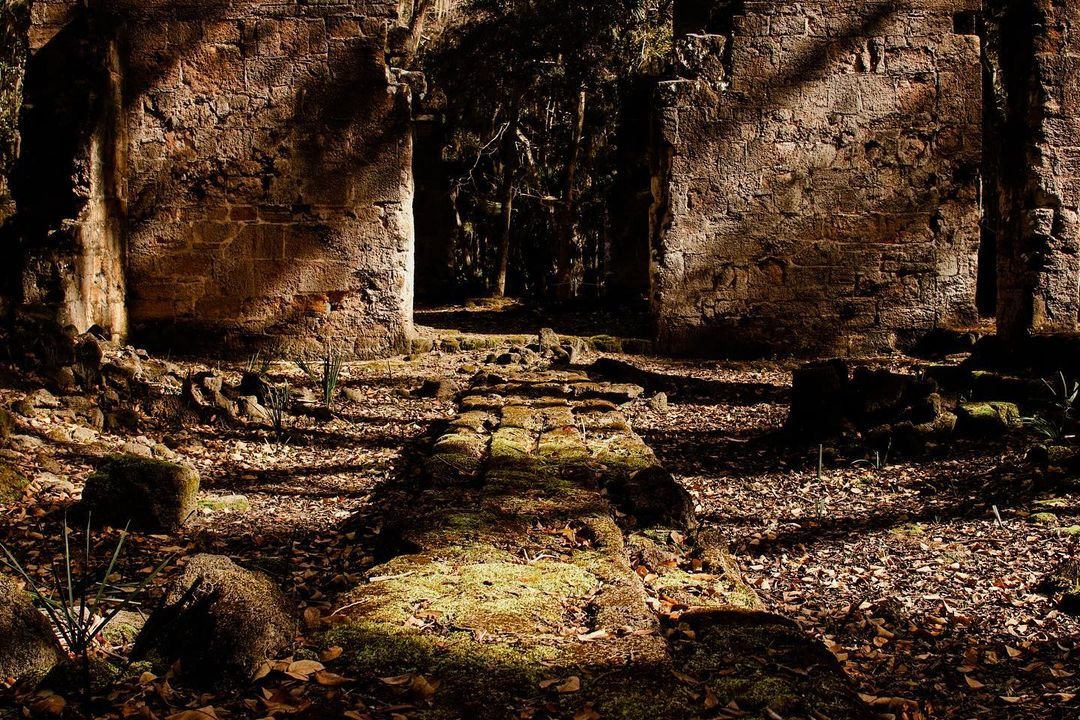Hidden deep within the woods in Flagler County, sit the crumbling ruins of a once thriving sugar mill and plantation. Named one of the spookiest ghost towns in America by Country Living Magazine, BulowVillle (now Bulow Plantation Ruins Historic State Park) is an eerie reminder of the area’s unpleasant past—one marred by slave labor and the forced removal of Native Americans.

Today, the site of the former plantation is dead silent—save for the occasional bird warble and the rustling of leaves in the wind. But back in the early 1800s, BulowVille hummed with life. Enslaved people toiled in the Florida heat, performing the grueling work of cutting and boiling sugar cane and tending to fields of cotton, rice and indigo. Others worked inside the plantation house, cooking and cleaning. An 1830 census notes that 193 slaves were present on the plantation.
Major Charles Bulow, a wealthy merchant from Charleston, South Carolina, first purchased the 4,675-acre plot of land in 1821. Soon after the plantation was established, however, Bulow passed away, leaving his son, John Joachim Bulow, to inherit the property. Despite being just a teen, the younger Bulow took over the plantation and successfully continued sugar production. His success, however, was to be short-lived—ending with the Second Seminole War.
While many, including the United States government, argued for the forced removal of the Seminoles, Bulow did not. He maintained a good relationship with the tribe—so good, in fact, that he fired upon troops who invaded his property to try and remove the Seminoles. The troops, led by Major Benjamin Putnam, arrested Bulow and made the plantation an outpost for the militia. Putnam and his men continued their campaign against the tribe, but were eventually forced to relocate to St. Augustine, freeing Bulow in the process.
The Seminoles, not understanding what had transpired between the militia and Bulow, became increasingly hostile. Bulow, along with other plantation owners, fled to St. Augustine. In January 1836, the tribe set fire to the plantation and mill. Devastated, Bulow fled to Paris and died just three years later at 26.
Today, ruins and rumors surround Bulow Plantation Ruins Historic State Park. Fragments of the sugar mill still stand, allowing visitors a peek at the past. But it’s the unseen that has earned the area its “spooky” title. Some claim the Seminoles cursed Bulow Plantation and that their spirits lurk around the park. Many claim to have seen orbs of light and shadowy figures in the trees. Others speak of unnaturally “cold spots” during the scorching summer heat.
Not sure what to believe? Visit this spooky spot in Palm Coast and the Flagler Beaches and find out for yourself.